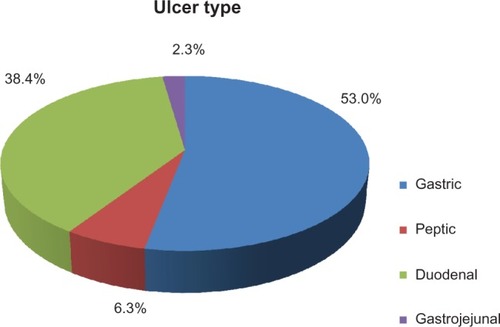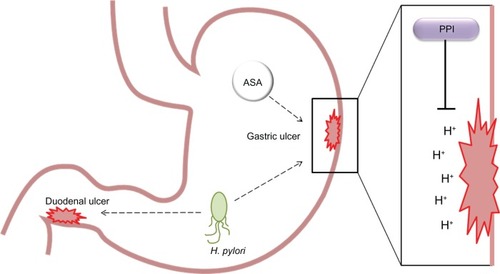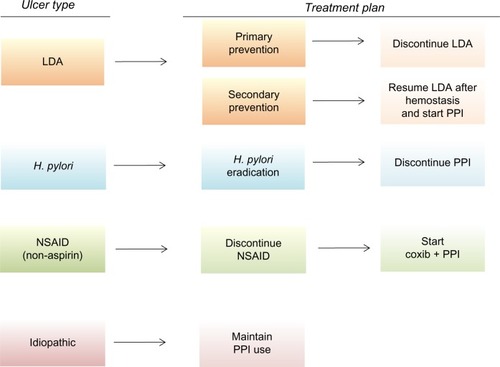Figures & data
Figure 1 Hospitalizations based on ulcer type from 1998–2005.

Table 1 General classifications of peptic ulcers
Figure 2 Model of peptic ulcer formation. In the stomach, both Helicobacter pylori and aspirin are able to induce gastric ulcer formation. Proton pump inhibitors act to reduce gastric acid production, thereby reducing ulceration in the stomach lining.

Table 2 Risk factors for aspirin-induced ulcers
Table 3 Classification of treatments for peptic ulcers
Figure 3 Flow chart of recommended management to prevent recurrent ulcer bleeding based on type. Reprinted by permission from Macmillan Publishers Ltd: American Journal of Gastroenterology. Laine L, Jensen DM. Management of patients with ulcer bleeding. Am J Gastroenterol. 2012;107(3):345–360. Copyright 2012.Citation3

